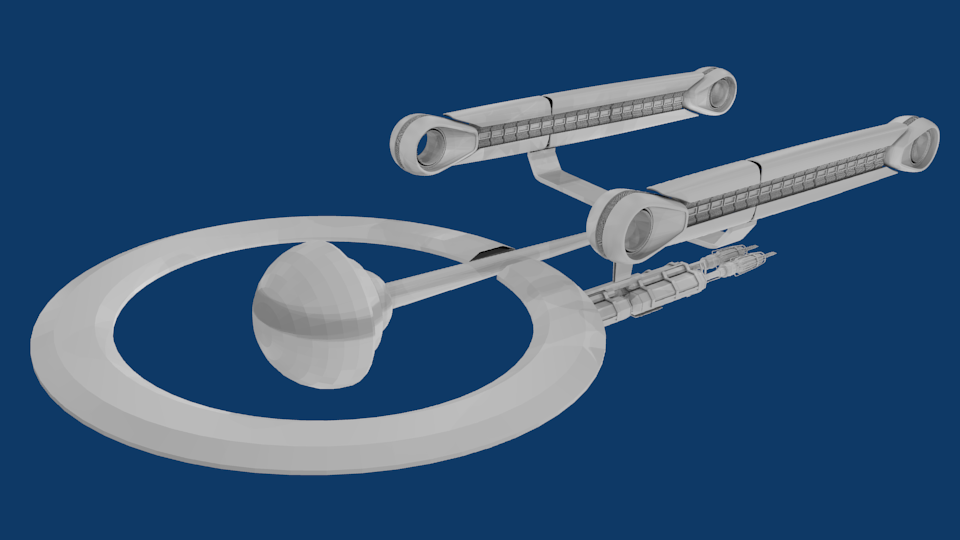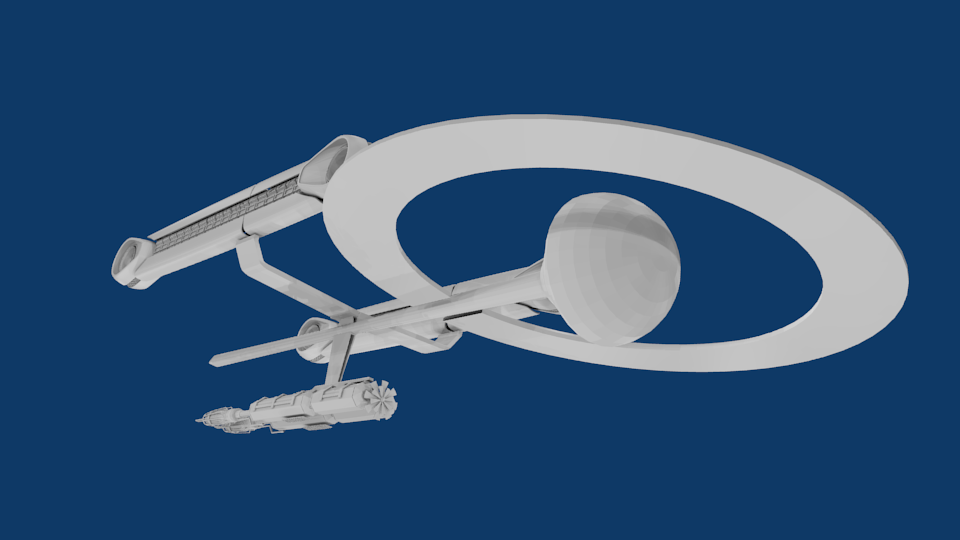Oooh yes, it works very well, I think!
And still quite unique despite looking familiar.
Very, very nice.
That looks very interesting. The only suggestion I would have is that in the event of an emergency the pod should be able to separate, but at the moment it would have to dodge the outer ring which might not always be possible.
Thanks guys!
So, the big bulb is the habitable area of the ship. Decks are oriented perpendicular to the direction of travel, as Christopher suggested.
The saucer part is actually what I'm going to call the Electromagnetic Force Field array, which acts basically like a deflector shield. No habitable area in there.
Interesting. It makes sense to have the habitable section encased within a shield array like that. It differentiates nicely between the habitat section, which needs protection, and the uninhabited engine section. Indeed, perhaps the shield would be a defense against radiation from the engines themselves as well as from cosmic radiation/debris. (Although a EM shield would only protect against particle radiation, not gamma/x-rays.)
Along those lines, how about some shielding domes on the front of the engine nacelles to protect the habitat section? Might evoke the forward domes of the classic design a bit. Also, if the gravity vector is now "rearward," then there's no real reason to have the nacelles oriented "straight up" as they are -- it's a little incongruous. How about angling them radially outward from the center line, at 120-degree angles from each other and the reactor assembly? (Although I can't help thinking it would be more symmetrical if you had three nacelles 120 degrees apart and the reactor assembly along the centerline. Certainly if you had fusion rockets, they'd need to be at the centerline or the thrust would be imbalanced.)
In this design, the habitat section seems rather small, unless it's a really huge ship. Maybe it could be a bit bigger, although I like the idea of the majority of the ship's mass/volume being uninhabited and devoted to engines and shielding.
That looks very interesting. The only suggestion I would have is that in the event of an emergency the pod should be able to separate, but at the moment it would have to dodge the outer ring which might not always be possible.
Not necessarily. If the ring is the shield that protects the crew, then it should stay with the habitat sphere when it separates from the engines. So the separation point should be just behind where the ring meets the connective strut to the engines.
Thanks, and I like that suggestion of angling the engines. I'm going to try that, for sure. I was definitely thinking for the ring to be protection from space and the engines, as well. I don't plan for it to be a big solid ring, either... It'll be kind of mesh like.
The habitat section will probably get bigger as well, but the scale of the ship is going to be huge. The ship in Avatar is about a mile long, so I was figuring on about the same for this one.
The fusion rockets won't be very big, but they are going to go right at the back of my long supporting structure, so they should be pretty centered.
More later.

-Ricky




